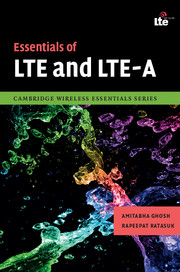Preface
Published online by Cambridge University Press: 05 August 2011
Summary
The next-generation wireless broadband technology is changing the way we work, live, learn, and communicate through effective use of state-of-the-art mobile broadband technology. The packet-data-based revolution started around 2000 with the introduction of 1x Evolved Data Only (1xEV-DO) and 1x Evolved Data Voice (1xEV-DV) in 3GPP2 and High Speed Downlink Packet Access (HSDPA) in 3GPP. The wireless broadband fourth-generation technology (4G) is an evolution of the packet-based 3G system and provides a comprehensive evolution of the Universal Mobile Telecommunications System specifications so as to remain competitive with other broadband systems such as 802.16e (WiMAX). Specification work was started in late 2004 on Long Term Evolution (LTE) of the UMTS Terrestrial Radio Access and Radio Access Network intended for commercial deployment in 2010. Two main components constitute the LTE system architecture — the Evolved Universal Terrestrial Radio Access Network (E-UTRAN) and the Evolved Packet Core (EPC).
- Type
- Chapter
- Information
- Essentials of LTE and LTE-A , pp. xi - xiiiPublisher: Cambridge University PressPrint publication year: 2011



